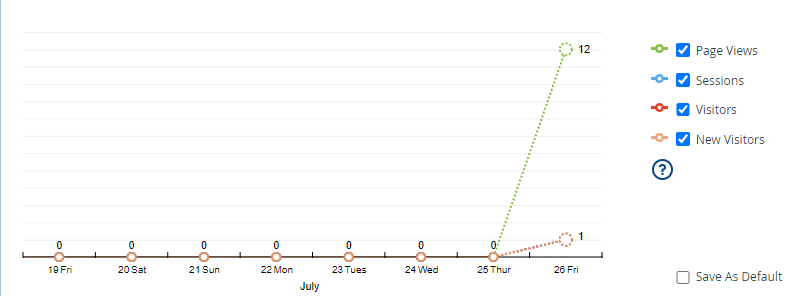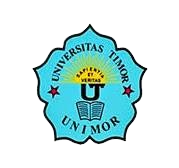HUBUNGAN ANTARA KESIAPAN MAHASISWA SEMESTER II PRODI KEPERAWATAN UNIVERSITAS TIMOR DENGAN TINGKAT KECEMASAN MENGHADAPI PRAKTIK KLINIK PERDANA SELAMA PANDEMI COVID-19
Abstract
Latar Belakang Pandemi COVID-19 telah berdampak pada berbagai hal termasuk pendidikan keperawatan baik di negara berkembang maupun negara maju. COVID-19 telah mendorong perubahan mendadak dalam pendidikan keperawatan bahkan memengaruhi persyaratan program pendidikan keperawatan secara keseluruhan termasuk penyampaian jam teori di kelas, serta peluang pembelajaran klinik dan laboratorium bagi mahasiswa. Tujuan untuk Mengetahui Hubungan antara Kesiapan Mahasiswa Semester II Program Studi Keperawatan Universitas Timor dengan Tingkat Kecemasan Menghadapi Praktik Klinik Perdana Selama Pandemi COVID-19. Metode Jenis penelitian kuantitatif dengan desain penelitian deskriptif analitik menggunakan pendekatan cross sectional. Populasi dalam penelitian ini adalah semua mahasiswa keperawatan semester II (dua) sebanyak 12 orang. Teknik pengambilan sampel secara total sampling dengan sampel berjumlah 12 orang. Pengumpulan data dengan kuesioner online menggunakan google form. Analisis data menggunakan uji korelasi chi square. Hasil Uji statistik univariat menunjukkan bahwa sebagian besar mahasiswa mengalami kecemasan ringan (75%) dan siap menjalani praktik klinik (83,3%). Hasil Chi Square menunjukan adanya hubungan antara kesiapan dengan kecemasan menghadapi praktik klinik perdana (p value 0.015 < 0,05). Kesimpulan Membangun dan meningkatkan kompetensi klinik dan kepercayaan diri mahasiswa untuk bekerja di bidang penyakit menular seperti virus corona sangat diperlukan persiapan diri yang matang baik Kesiapan Fisik, Kesiapan Emosional, Kesiapan Pengalaman maupun Kesiapan Pengetahuan
References
Agu, C. F., Stewart, J., McFarlane-Stewart, N., & Rae, T. (2021). COVID-19 pandemic effects on nursing education: looking through the lens of a developing country. International Nursing Review, 68(2), 153–158. https://doi.org/10.1111/inr.12663
Bastable, S. B. (2021). Nurse as Educator: Principles of Teaching and Learning for Nursing Practice. Jones & Bartlett Learning.
Bihari S. (2014). Academic anxiety among secondary school students with reference to gender, habitat and types of school. Int J Edu Psychol Res, 3, 30–2. Google Scholar
Bishop, S. J. (2008). Neural mechanisms underlying selective attention to threat. Annals of the New York Academy of Sciences, 1129, 141–152. https://doi.org/10.1196/annals.1417.016
CL, B. (2014). Academic anxiety among high school students in relation to gender and type of family. Shodh Sanchayan. Shodh Sanchayan, 5, 1–7. Google Scholar
Dewart G.; Lynn c.; Lorraine t.; Kristin P. (2020). Since January 2020 Elsevier has created a COVID-19 resource centre with free information in English and Mandarin on the novel coronavirus COVID- 19 . The COVID-19 resource centre is hosted on Elsevier Connect , the company ’ s public news and information. January.
DM, R. (2012). Assesment and management of anxiety among adolescents through relaxation and counseling. Indian J Psychol Sci., 3, 130–42. Google Scholar
Ekawarna. (2018). Manajemen konflik dan stress (1st ed.). Bumi Aksara.
Endler, N. S., & Kocovski, N. L. (2001). State and trait anxiety revisited. Journal of Anxiety Disorders, 15(3), 231–245. https://doi.org/10.1016/S0887-6185(01)00060-3
Eysenck, M. W., Derakshan, N., Santos, R., & Calvo, M. G. (2007). Anxiety and cognitive performance: Attentional control theory. Emotion, 7(2), 336–353. https://doi.org/10.1037/1528-3542.7.2.336
Gibson, H. a. (2014). AN INDEPENDENT VOICE FOR NURSING A Conceptual View of Test Anxiety. 49(4), 1–11.
Gu, R., Ge, Y., Jiang, Y., & Luo, Y. J. (2010). Anxiety and outcome evaluation: The good, the bad and the ambiguous. Biological Psychology, 85(2), 200–206. https://doi.org/10.1016/j.biopsycho.2010.07.001
H, B. (2011). The objective structured clinical examination within intensive care nursing education. Nurs Crit Care, 16(2), 99–105.
Harden RM, G. F. (1979). Assessment of clinical competence using and objective structured clinical examination (OSCE). Med Educ, 13(1), 41–54.
Herman, Arifannisa, Imam Mashudi, Linna Fitriani, Sheila Fitriana, Putri Tipa Anasi, Andri Kurniawan, Astuti Cendrawati Ramli, Mewa Zabeta, Nazariah, Tri Agustini Solihati, Lucy Asri Purwasi, Nur Fitriyana, E. N. M. (2022). Teknologi Pengajaran (T. P. Wahyuni (ed.)). PT. GLOBAL EKSEKUTIF TEKNOLOGI.
Jones, D. L., Nelson, J. D., & Opitz, B. (2021). Increased Anxiety is Associated with Better Learning from Negative Feedback. Psychology Learning and Teaching, 20(1), 76–90. https://doi.org/10.1177/1475725720965761
Kelly, M. A., Mitchell, M. L., Henderson, A., Jeffrey, C. A., Groves, M., Nulty, D. D., Glover, P., & Knight, S. (2016). OSCE best practice guidelines—applicability for nursing simulations. Advances in Simulation, 1(1), 1–10. https://doi.org/10.1186/s41077-016-0014-1
Leigh, E., Chiu, K., & Clark, D. M. (2021). Is concentration an indirect link between social anxiety and educational achievement in adolescents? PLoS ONE, 16(5 May), 1–12. https://doi.org/10.1371/journal.pone.0249952
Mitte, K. (2007). Anxiety and risky decision-making: The role of subjective probability and subjective costs of negative events. Personality and Individual Differences, 43(2), 243–253. https://doi.org/10.1016/j.paid.2006.11.028
Mkrtchian, A., Aylward, J., Dayan, P., Roiser, J. P., & Robinson, O. J. (2017). Modeling Avoidance in Mood and Anxiety Disorders Using Reinforcement Learning. Biological Psychiatry, 82(7), 532–539. https://doi.org/10.1016/j.biopsych.2017.01.017
Monty P. Satiadarma. (2001). Persepsi Orang Tua Membentuk Perilaku Anak: Dampak Pygmalion di dalam Keluarga. Yayasan Pustaka Obor Indonesia.
Musallam, E., & Flinders, B. A. (2021). Senior BSN students’ confidence, comfort, and perception of readiness for clinical practice: The impacts of COVID-19. International Journal of Nursing Education Scholarship, 18(1), 1–12. https://doi.org/10.1515/ijnes-2020-0097
Nag, K., Ghosh, B., Datta, A., Karmakar, N., & Bhattacharjee, P. (2019). A cross-sectional study on the prevalence of anxiety among school students in Teliamura municipality area of Tripura. Indian Journal of Psychiatry, 61(5), 491–495. https://doi.org/10.4103/psychiatry.IndianJPsychiatry_415_18
Nakayoshi, Y., Takase, M., Niitani, M., Imai, T., Okada, M., Yamamoto, K., & Takei, Y. (2021). Exploring factors that motivate nursing students to engage in skills practice in a laboratory setting: A descriptive qualitative design. International Journal of Nursing Sciences, 8(1), 79–86. https://doi.org/10.1016/j.ijnss.2020.12.008
Nweke, C. I., Abazie, O. H., Adetunji, A. J., & Okwuikpo, M. I. (2021). Readiness for clinical practice amidst coronavirus among nursing students in southwest Nigeria. International Journal of Africa Nursing Sciences, 15, 100328. https://doi.org/10.1016/j.ijans.2021.100328
Pati, W. C. B. (2022). Pengantar Psikologi Abnormal (Definisi, Teori, dan Intervensi) (Moh. Nasrudin (ed.); 1st ed.). PT. Nasya Expanding Management.
Poorman, S. G., Mastorovich, M. L., & Gerwick, M. (2019). Interventions for test anxiety: How faculty can help. Teaching and Learning in Nursing, 14(3), 186–191. https://doi.org/10.1016/j.teln.2019.02.007
Rizkyana Dewi Sarah Ariyani, Dwi Budi Prastiani, A. R. (2019). Hubungan Kesiapan Mahasiswa Semester II yang akan Praktik Klinik dengan Kecemasan Mahasiswa Prodi Sarjana Keperawatan Stikes Bhamada Slawi.
Rushforth, H. E. (2007). Objective structured clinical examination (OSCE): Review of literature and implications for nursing education. Nurse Education Today, 27(5), 481–490. https://doi.org/10.1016/j.nedt.2006.08.009
Selim A, Ramadan F, El-Gueneidy M, G. M. (2012). Using objective structured clinical examination (OSCE) in undergraduate psychiatric nursing education: is it reliable and valid? Nurse Educ Today, 32(3), 283–288.
Shepperd, J. A., Grace, J., Cole, L. J., & Klein, C. (2005). Anxiety and outcome predictions. Personality and Social Psychology Bulletin, 31(2), 267–275. https://doi.org/10.1177/0146167204271322
Siyoto, S., & Sodik, M. A. (2015). DASAR METODOLOGI PENELITIAN (1st ed.). Literasi Media Publishing. https://books.google.co.id/books?id=QPhFDwAAQBAJ
Wray, L. D., & Stone, E. R. (2005). The role of self-esteem and anxiety in decision making for self versus others in relationships. Journal of Behavioral Decision Making, 18(2), 125–144. https://doi.org/10.1002/bdm.490
Xu, P., Gu, R., Broster, L. S., Wu, R., Van Dam, N. T., Jiang, Y., Fan, J., & Luo, Y. J. (2013). Neural basis of emotional decision making in trait anxiety. Journal of Neuroscience, 33(47), 18641–18653. https://doi.org/10.1523/JNEUROSCI.1253-13.2013
This journal lisence You are free to:
- Share — copy and redistribute the material in any medium or format for any purpose, even commercially.
- Adapt — remix, transform, and build upon the material for any purpose, even commercially.
- The licensor cannot revoke these freedoms as long as you follow the license terms.












